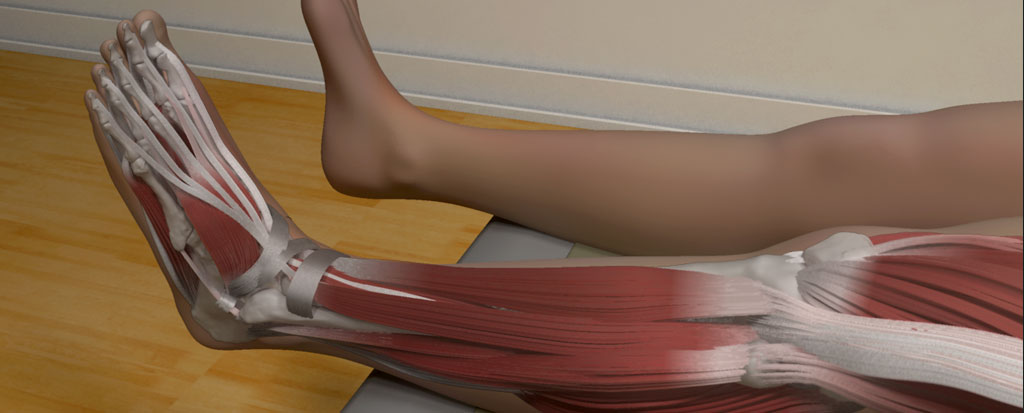
There are a lot of syndromes that are brought to the office that have to do with the feet and the pelvis. Many clients come to visit with painful conditions of the feet and lower legs. Our intention is to create a base of support for the pelvis from below. I have done thousands of sessions on plantar fasciitis and other problems of the lower leg and feet. When treating this, we want to get as much horizontal angles in the pelvis as we can by putting order into the ankles. Look at the transverse arch, the ankles, knees and the angle of the calcaneus to the floor. You might ask yourself this question, “Does the foot belong to the body? Is there separation of the seal from the forefront? And from the clients perspective, what caused this pain and what can be done about it?” So, its work and education.
Instead of thinking of leg work as working bones in some sequence, I am always thinking about the entire structure when I am looking at my client. I often start at a retinacula which may be glued and stuck from constant activity of the tendons underneath them. If the feet are flat, I start at the fibula and attempt to create freedom along the fibula because the peroneal tendons need space. It’s important to deal with the plantar fascia which oftentimes gets bunched up along the lateral arch. I pay special attention to the adductor hallucis. Work there will help the transverse arch. I look especially closely at the inter-osseous membrane, and I also work the patellar ligament.
When I look at the client’s back for this session, I think about extension. It’s the most important factor. I think of bringing the extensors close to the spine so they will lengthen with extension instead of bunching laterally. I work the spots that don’t seem to extend as they lean over.
Sometimes movement work or visualization is extremely important after a session. I have the client visualize their weight falling through the inside of their foot through the inside arch. Or I have them visualize having wings on the outside toes and feeling a lift through them. I know I am getting the job done if the bones of the foot feel as if they’re floating softly and feel like a bag of flesh. If that doesn’t feel right, go back to behind the fibula. If you feel like the angle is balanced well, but the foot is still unorganized, go to the planter fascia again to help the lateral arch.
I’ve been asked many times why do you do all this just to deal with plantar fasciitis or other complaints of the legs? It’s a simple answer really, it is called rolfing/structural integration.
I have plantar fasciitis and I believe it has caused the muscles and tendons in my calf to become tight as cords. It’s hard to get in there and massage them properly. What do you recommend for getting the deep down tendons and fascia in the lower leg to loosen it up.
If you can’t have some one do it for you with manualtherapy, stretching is the only avenue